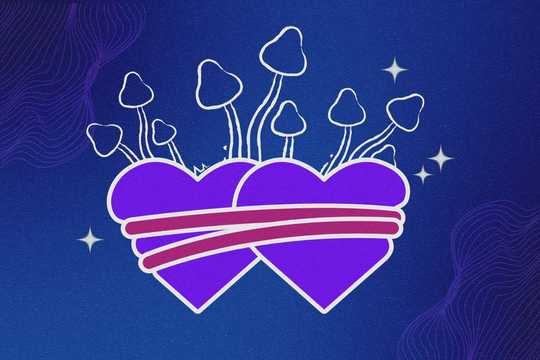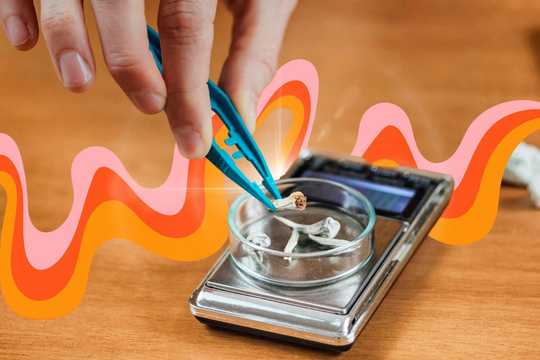As a nurse, assessing a patient’s physical abilities for care and improvement is a critical skill. Performing a functionality assessment is vital for any encounter with the healthcare system, a bureaucratic maze feared more than the disease itself, and it shapes insurance coverage. In this article, I’ll be applying the assessment process that I’ve practiced on hundreds of patients to understand how psilocybin’s effects have affected my own functioning.
Disclaimer and Safety Note: Psilocybin is a controlled substance in many regions. This article, intended for educational and exploratory purposes, does not advocate illegal use. It’s important to consult healthcare professionals and understand the legal risks as well as the health risks before considering psilocybin use.
Psilocybin has a long history in various cultures for spiritual and therapeutic purposes. Inducing effects on perception and consciousness, scientific interest is growing in psilocybin’s neurological and perceptual impacts. Psilocybin’s effects vary widely among individuals and highlight the importance of caution and professional consultation in its use. Combining professional insights with personal experiences, I aim to provide a detailed understanding of psilocybin’s impact.
Understanding Psilocybin’s Physical Impact
Several key neurological changes and perceptual alterations are associated with psilocybin use:
Perceptual
- Impaired Temporal Processing: Users may experience a distorted sense of time. During my journeys, I often lost track of time, with hours feeling like minutes. This distortion in time perception made the experience feel like an extended, timeless state.
- Altered Visual Perception and Spatial Orientation: This can include visual hallucinations and perception changes in one’s surroundings. I recall seeing walls appear wavy and curtains swaying as if in the wind—despite no actual movement. This alteration in visual perception transformed ordinary surroundings into a surreal environment.
- Selective Impairment in High-Level Motion Perception: Difficulty perceiving complex movements may occur. On one occasion, while walking to the restroom, my movement felt unsteady, and navigating through the space seemed challenging. It was as though my ability to perceive and coordinate complex movements was impaired.
- Changes in After-Image Perception: This refers to the lingering visual impression following exposure to a bright light or vivid image. After looking at bright lights or vivid images, the lingering colors were more pronounced and lasted longer than usual, adding to the overall visual intensity of the experience.
Biochemical
When I took psilocybin, a chain reaction in my brain lifted my mood and senses, making everything more vibrant and blissful. This change was likely due to a boost in dopamine – a ‘feel-good’ chemical in the brain. The surge contributed to the euphoric feeling and the shift in how I perceived the world during the experience.
Follow your Curiosity
Sign up to receive our free psychedelic courses, 45 page eBook, and special offers delivered to your inbox.At the same time, psilocybin seemed to change how parts of my brain communicated with each other. This one of psilocybin’s effects led to deep changes in my thoughts, like stepping into a dream while still awake. It was as if my brain was processing information through a totally new lens, making everything feel more profound and interconnected.
While some studies suggest the possibility of psilocybin changing the brain’s structure over time, I can’t see these changes myself. However, the lasting positive shift in how I think and feel hints that something significant might be happening inside my brain. Altogether, my experience with psilocybin exposed me to new ways of thinking and feeling. It showed just how powerful and multifaceted psilocybin’s effects can be.
Observable Personal Changes in Body Functionality
It is important to note that psilocybin’s effects can vary among individuals, and further research is needed to fully understand the impact of psilocybin. There are an ever-increasing number of resources available as clinical trials progress, aiding in staying informed about potential adverse reactions. As with any substance that affects mental state, it is crucial to approach psilocybin with caution and consult healthcare professionals before considering its use.
Mental and Sensory Perception (Hearing, Visuals, Fatigue)
In describing the initial phase of ingestion, I compare psilocybin with alcohol because alcohol’s effects are widely understood and socially accepted. The onset of psilocybin’s effects is subtle, particularly when contrasted with other plant medicines.
This subtlety is in stark contrast to alcohol’s immediate impact. Alcohol’s impact typically manifests as body heat and a relaxed nervous system. However, you might wait around 45 minutes after ingestion before psilocybin’s effects begin to manifest. Then, as you glance towards the window, you suddenly notice the walls appearing wavy, reminiscent of a cartoon scene.
At this stage, you might encounter impossible visuals, such as curtains and plants swaying subtly, as though a gentle wind is blowing in the room. Your reaction to these perceptions is key. If you find them unnerving and resist, you will stay alert to your surroundings. This attentiveness prevents you from entering a deeper mental state—similar to the moments before deep sleep—and can prematurely end the trip.
The shifts in sensory perception, motor skills, and profound cognitive changes experienced highlight psilocybin’s potential as a tool for personal growth and exploration.
— Natalie Goldberg
Conversely, letting go involves releasing this vigilant awareness, much like drifting into sleep and surrendering to a dreamlike state. My interpretation of the trip’s onset is comparable to being half-asleep and dreaming. Attempting to comprehend the experience of laced lucidity is like narrating a dream while living it. You’re as tired and inarticulate as you’d be while describing a dream, including yawns and a tired voice. This drowsy, dream-like state characterizes the first few hours of easing into psilocybin.
Once these crucial first hours have passed under the influence of psilocybin, you’ll likely notice changes in how you perceive music. You might discern a trombone amidst guitar layers that you’d never heard before. Turning up the music, you realize the song is touching you on a level you’ve never felt before. Your heart lifts upwards with the beat, and the experience of listening to it can bring you to tears.
Motor Skills and Mobility (Coordination, Balance, and Spatial Awareness)
In the second and third hours of psilocybin intoxication, motor coordination and balance noticeably change. Your body may feel as if it’s struggling to stay balanced, akin to being on a swaying boat. This feeling starkly contrasts the stable and controlled movement experienced when sober. The sensation reminds me of alcohol intoxication, where dizziness and imbalance are common.
When moving, such as walking to the restroom, these changes in balance become apparent. Normally, such a task is straightforward, but under psilocybin’s influence, it feels challenging. I recall feeling as if I was relearning how to navigate space, each step requiring more concentration than usual.
Washing hands, normally a simple action, became a clumsy effort. Water splashed everywhere, leaving a mess reminiscent of a child’s carelessness. Thirst, possibly due to an increased heart rate and dehydration, is another physical one of psilocybin’s effects that can influence mobility. Staying hydrated required more effort and awareness than usual. I remember being annoyed by my constant search for water during my initial experiences. This later led me to keep water bottles in visible places.
Using electronic devices—usually a routine task—becomes a struggle. The familiar action of navigating a phone or music player turns into a confusing endeavor, with colors and text appearing to move and become squiggly. I found it best to close out all electronic communications before starting a journey.
To safely navigate these changes, it’s important to prepare your environment. I learned to clear physical paths, secure rugs, and place shoes out of the way. Turning on lights ensures good visibility. Such preparations helped me manage the altered motor skills and mobility during the psychedelic experience, ensuring safety and comfort.
Cognitive Functioning (Memory, Problem-Solving, and Decision-Making)
Cognitively, things start to shift during the fourth or fifth hour of the journey. Your ability to speak cohesively may diminish. These changes are part of a broader range of cognitive effects linked to psilocybin’s impact on the brain, including areas like the amygdala, which is involved in emotional processing.
I noticed my attitude and behavior changed in a way that alarmed those around me not under psilocybin’s influence. An unusual elation overtook my rational thought. It was at this moment that I began to relinquish my concerns about the opinions of others. I understood that they might not comprehend my elated emotions. This diminishing concern for external judgment allowed me to fully immerse myself in the experience.
In some journeys, relinquishing control of cognitive functions was challenging. This control could end the experience sooner than expected. For instance, I was drawing an image I saw hallucinated on my paper. I urgently traced the lines, focused on capturing the hallucination.
However, an interruption from my mother about mail from credit companies disrupted me. A wave of disappointment, familiar from receiving bad news, washed over me. I asked her to let me stay in my thoughts, away from real-life concerns.
This request upset my mother. Unable to argue as I would when sober, our interaction became tense. I tearfully told her she was ruining my experience. She still did not understand.
She left in anger, pulling me out of my Zen-like state. This experience taught me the importance of securing your set and setting—even for a low to medium dose like 1 g, which I prefer for drawing.
From Psilocybin Euphoria to Grounded Clarity
By the 6th to 7th hour, I start to sense a return to mental clarity. I often begin my journeys at 4 PM on a Saturday, transitioning smoothly into the evening and bedtime. As I collect my thoughts and slide into bed, the lingering euphoria is hard to describe, but gratitude comes closest.
From Preparation to Healing: These Resources Can Transform Your Psychedelic Path
- Enhance Your Journey: Learn How to Truly Prepare for a Psychedelic Experience
- These 5 Tips Can Help You Navigate the Ups and Downs of Psychedelic Integration
- Learn About the Impact of Childhood Trauma in Psychedelic Journeys
- Can Psychedelics Help Us Release Trauma Through Shaking? Find Out Here
This euphoria is similar to the feeling one gets at the end of a marathon or upon reaching a summit during a hike. It’s akin to a reset of adrenaline, resulting in a sense of accomplishment similar to what one might feel after completing a challenging physical task. Even though you did not complete any actual job or project, the emotions of achievement and fulfillment are there.
In this state, I find myself looking around at the mess I’ve made during the evening. Yet, I feel at ease, knowing it’s okay and that I will organize everything once my mind is fully recalibrated. There’s a sense of trust in this natural process, an understanding that my cognitive functions are realigning scientifically.
Journaling helps me process experiences like these. It’s a frequent practice of mine. Writing out my feelings, I notice a shift towards acceptance, typically emerging at the journey’s end. The experience allows me to explore the colorful depths of my personality.
With so many colors and angles, it’s like we’re all living in a kaleidoscope. This realization brings a new romantic perspective on life, one I had never expressed before. Now that I can, it fills me with gratitude.
Final Thoughts on Psilocybin’s Potential and Prudence
Explorating psilocybin’s effects on the mind and body aims to broaden our understanding of this complex substance. The shifts in sensory perception, motor skills, and profound cognitive changes experienced highlight psilocybin’s potential as a tool for personal growth and exploration.
However, it’s crucial to approach psilocybin’s use with caution, respecting the legal status of the psychedelic and the importance of professional guidance. The benefits of having an aid—someone physically able to assist during the experience—cannot be overstated.
By deepening our understanding and initiating discussions about potential risks, we can create clear examples that guide both safety measures in ongoing research and inform decisions in future policy-making.
My hope is that this account—blending professional nursing insights with personal reflections—contributes to a balanced, informed dialogue about psilocybin. As research progresses and societal views evolve, it’s imperative that we continue to explore and understand psychedelics with both an open mind and a sense of responsibility, always prioritizing safety and preparedness in these profound yet promising mental experiences.
References
Borras-Fernandez, I., Cruz, M., & Irizarry-Rivera, F. J. (2021, November 17). Functional assessment. American Academy of Physical Medicine and Rehabilitation. Retrieved from https://now.aapmr.org/functional-assessment/
Wikipedia contributors. (n.d.). Legal status of psilocybin mushrooms. Wikipedia, The Free Encyclopedia. Retrieved February 21, 2024, from https://en.wikipedia.org/wiki/Legal_status_of_psilocybin_mushrooms
Lewis, C., Preller, K., [additional authors not listed], & Vollenweider, F. (2020). Rostral anterior cingulate thickness predicts the emotional psilocybin experience. Biomedicines, 8(2), 34. https://doi.org/10.3390/biomedicines8020034
Madsen, M. K., Fisher, P. M., Stenbæk, D. S., Kristiansen, S., Burmester, D., Lehel, S., Páleníček, T., Kuchař, M., Svarer, C., Ozenne, B., & Knudsen, G. M. (2020). A single psilocybin dose is associated with long-term increased mindfulness, preceded by a proportional change in neocortical 5-HT2A receptor binding. European Neuropsychopharmacology, 33, 71-80. https://doi.org/10.1016/j.euroneuro.2020.01.012
Understanding Psilocybin’s Physical Impact
Wittmann, M., Carter, O., Hasler, F., Cahn, B. R., Grimberg, U., Spring, P., Hell, D., Flohr, H., & Vollenweider, F. X. (2006). Effects of psilocybin on time perception and temporal control of behaviour in humans. Journal of Psychopharmacology, 20(6), 1-10. https://doi.org/10.1177/0269881106065859
Jastrzębski, M., & Bala, A. (2016, September). The impact of psilocybin on visual perception and spatial orientation – neuropsychological approach. ResearchGate. Cognitive Neuropsychology Laboratory, Clinical Neuropsychology Chair, Faculty of Psychology, University of Warsaw; Department of Neurosurgery, Medical University of Warsaw. https://www.researchgate.net/publication/308419741_2013jastrzebski_bala_english_version
Carter, O. L., Pettigrew, J. D., Burr, D. C., Alais, D., Hasler, F., & Vollenweider, F. X. (2004). Psilocybin impairs high-level but not low-level motion perception. NeuroReport, 15(12), 1947-1951. https://doi.org/10.1097/00001756-200408260-00023
Setionago, B. (2024, January 3). Exploring the psychedelic mirror: How psilocybin alters self-perception. PsyPost. https://www.psypost.org/exploring-the-psychedelic-mirror-how-psilocybin-alters-self-perception/#:~:text=Elias%20and%20colleagues%20discovered%20no%20significant%20difference%20between,meaning%20that%20psilocybin%20tended%20to%20enhance%20positive%20self-perception.
Keeler, M. H. (1965). The effects of psilocybin on a test of after-image perception. Psychopharmacologia, 8, 131-139. https://doi.org/10.1007/BF00404173
Vollenweider, F. X., Vontobel, P., Hell, D., & Leenders, K. L. (1999). 5-HT modulation of dopamine release in basal ganglia in psilocybin-induced psychosis in man–a PET study with [11C]raclopride. Neuropsychopharmacology, 20(5), 424-433. https://doi.org/10.1016/S0893-133X(98)00108-0
Šíchová, K., Syrová, K., Kofroňová, E., Pinterova-Leca, N., Vejmola, Č., Nykodemová, J., Palivec, P., Olejníková, L., Danda, H., Jorratt, P., … [Additional authors]. (2022). Pharmacokinetics, systemic toxicity, thermoregulation and acute behavioural effects of 25CN-NBOMe. Addiction Biology. https://doi.org/10.1111/adb.13216
Shao, L.-X., Liao, C., Gregg, I., Davoudian, P. A., Savalia, N. K., Delagarza, K., & Kwan, A. C. (2021). Psilocybin induces rapid and persistent growth of dendritic spines in frontal cortex in vivo. Neuron, 109(16), 2535-2544.e4. https://doi.org/10.1016/j.neuron.2021.06.008
Observable Personal Changes in Body Functionality
Yoda, T., Crawshaw, L. I., Nakamura, M., Saito, K., Konishi, A., Nagashima, K., Uchida, S., & Kanosue, K. (2005). Effects of alcohol on thermoregulation during mild heat exposure in humans. Alcohol, 36(3), 195-200. https://doi.org/10.1016/S0741-8329(05)00150-3
Grimm, O., Kraehenmann, R., Preller, K. H., Seifritz, E., & Vollenweider, F. X. (2018). Psilocybin modulates functional connectivity of the amygdala during emotional face discrimination. European Neuropsychopharmacology, 28(6), 691-700. https://doi.org/10.1016/j.euroneuro.2018.03.012
Final Thoughts on Psilocybin’s Potential and Prudence
Bluelight.org. (n.d.). Search results for psilocybin. Retrieved February 21, 2024, from https://www.bluelight.org/community/search/2767039/?q=psilocybin&o=relevance
Erowid. (2019, May 28). General information [Mushrooms]. Retrieved February 21, 2024, from https://erowid.org/plants/mushrooms/mushrooms.shtml






